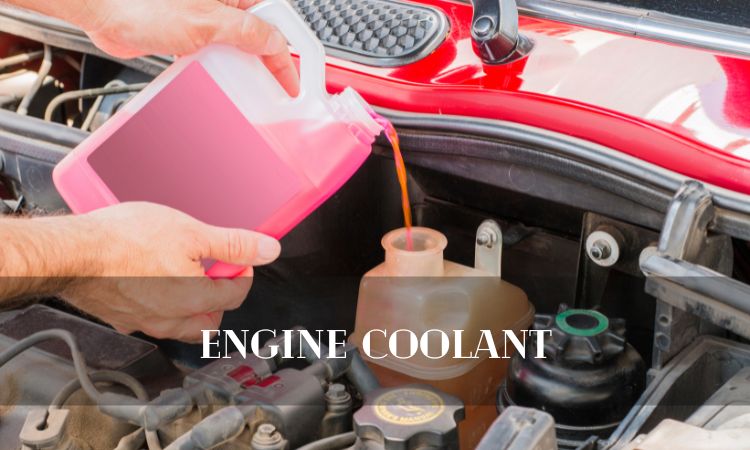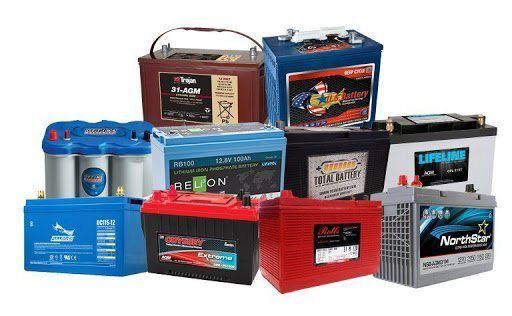Where Do I Put Engine Coolant? Best 1 Place For Coolant
If your car is like most, the engine coolant goes in the radiator. But before you open up that radiator cap, there are a few things you should know. The hot liquid circulating through your engine needs to be cooled somehow, and that’s where engine coolant comes in.
It absorbs heat from the engine and releases it into the air.
If your car is overheating, one of the first places you should check is the engine coolant. Most cars have a radiator and an overflow tank, which are both easy to check. The radiator is usually located at the front of the engine, while the overflow tank is usually located near the back.
If either of these tanks is empty, it’s likely that your car has a coolant leak. The next step is to check all of the hoses and clamps that connect these tanks to the engine. If any of them are loose or leaking, they will need to be replaced.
Once you’ve checked all of the obvious sources of leaks, it’s time to take a closer look at the engine itself. It’s possible that there is a crack in one of the cylinders, which would allow coolant to enter the combustion chamber and cause your car to overheat. If you suspect this might be the case, you’ll need to take your car to a mechanic for further diagnosis.
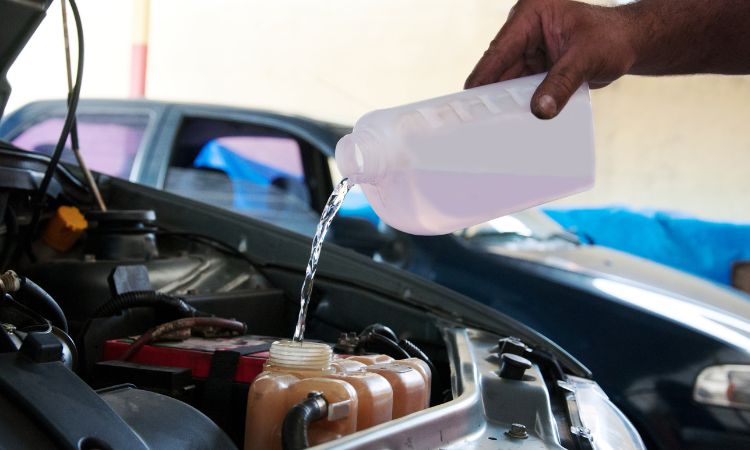
Does the Car Need to Be Running When Adding Coolant
Most people believe that the car needs to be running when adding coolant, but this is actually not the case. If the car is turned off and the radiator cap is removed, the coolant will flow out of the engine and into the overflow container. The only time you need to have the car running is if the radiator cap is still on, as this will allow pressure to build up and help push the coolant into the engine.
Engine Coolant Symbol
If you see the engine coolant symbol on your dashboard, it means that there is not enough coolant in your car’s radiator. You should add more coolant as soon as possible to avoid overheating your engine. Overheating can cause serious damage to your engine, so it’s important to keep an eye on your coolant levels.
If you’re not sure how to add coolant, consult your owner’s manual or take your car to a mechanic.
Do You Add Coolant to Radiator Or Reservoir
If your car is low on coolant, you may be wondering whether you should add it to the radiator or the reservoir. The answer depends on where the leak is coming from. If the leak is in the radiator, then you’ll need to add coolant to that.
However, if the leak is elsewhere in the cooling system, then adding coolant to the reservoir will be sufficient. The radiator is responsible for holding a majority of the engine’s coolant. It’s located at the front of the engine bay, and most cars will have a plastic cap labeled “coolant” or “radiator.”
You’ll need a funnel to pour coolant into this opening. Once you’ve added enough coolant, replace the cap and start up your car. Let it idle for a few minutes so that the new coolant can circulate throughout the system before checking your levels again.
The reservoir is typically located next to or on top of the radiator. It’s much smaller than the radiator and usually has a translucent plastic tank so that you can see how much fluid is inside. There will also be a fill line marked on this tank so that you don’t overfill it.
Simply remove the cap and add more fluid until it reaches this line. Again, let your car idle for a few minutes after adding more fluid before checking your levels again.
Read: Coolant
What to Do After Adding Coolant
If your car is running low on coolant, you’ll need to add more. But what should you do after adding coolant?
First, check the level again after the engine has cooled down.
If it’s still low, you’ll need to add more.
Next, check for leaks. A leaky radiator or hose can cause your car to lose coolant quickly.
If you find a leak, have it repaired as soon as possible.
Finally, keep an eye on the level and watch for any changes over time. If you notice that your car is losing coolant regularly, there may be a bigger problem that needs to be addressed.
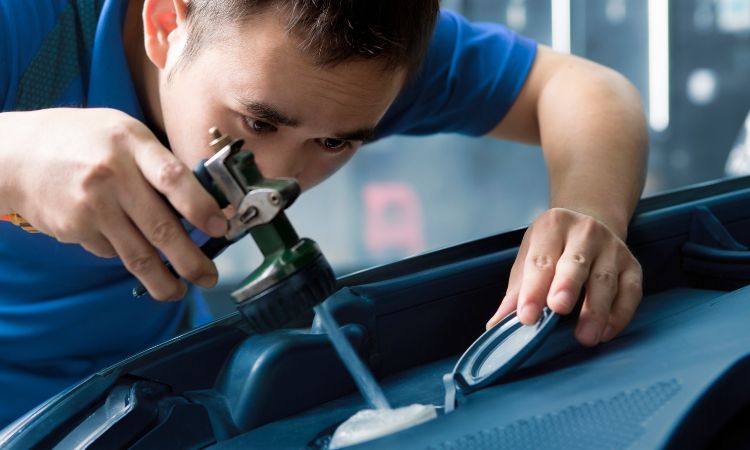
How Do I Know If My Car Needs Coolant
If you’re like most people, you probably don’t give your car’s coolant system a second thought – until there’s a problem. Then, you might find yourself wondering, “How do I know if my car needs coolant?” Here are a few signs that your car might need more coolant:
1. The temperature gauge is reading higher than normal. If the needle on your temperature gauge is creeping into the red zone, it’s an indication that your engine is running hotter than usual. This could be due to a leak in the cooling system or low levels of coolant. Either way, it’s best to have it checked out by a mechanic as soon as possible.
2. You see steam or fluid leaks. If you notice any steam coming from under the hood or fluid leaks (coolant looks like bright green anti-freeze), it means your car is losing coolant somewhere. Again, this is something that should be addressed by a professional as soon as possible.
3. Your heater isn’t working properly. If you turn on your heater and all you get is cold air (or lukewarm at best), it could be because there’s not enough antifreeze circulating through the system. This can happen if there’s a leak or if the level of antifreeze has fallen below the minimum mark.
4. The engine overheats and shuts down suddenly. This one definitely warrants an immediate call to a tow truck and/or mechanic!
An overheated engine can cause serious damage, so don’t take any chances with this one.
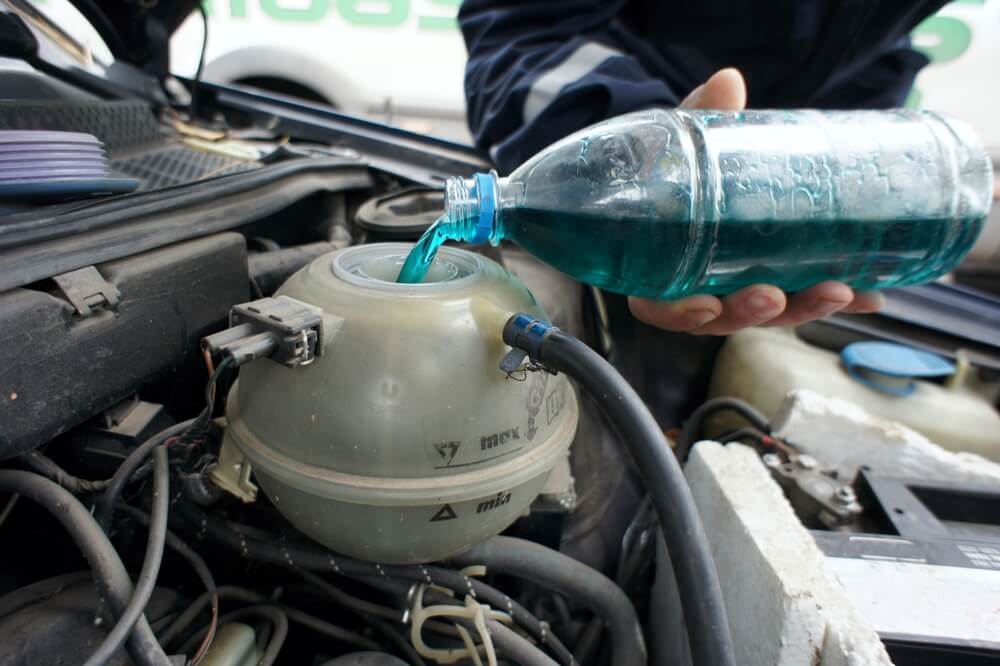
Credit: driving-tests.org
How Do You Fill Engine Coolant?
Assuming you are talking about a car with a radiator: The most important thing to know when filling your engine coolant is the difference between the two types of fluids- ethylene glycol and propylene glycol. Ethylene glycol is poisonous to animals, while propylene glycol is not.
If you accidentally spill either kind of coolant on the ground, be sure to clean it up immediately and wash your hands. To fill your engine coolant, first, locate the radiator cap on the front of your engine. The radiator cap is usually red and has a pressure release valve in the center.
Once you have located the radiator cap, unscrew it and set it aside. Next, locate the coolant reservoir; this is usually a plastic tank located near the radiator with a fill line marked on the side. Slowly pour coolant into the reservoir until it reaches the fill line; do not overfill!
Finally, screw the radiator cap back on tightly and start up your engine to check for leaks.
Read: How Many Gallons of Coolant
Where is the Coolant Located?
The coolant in your car is located in the radiator. The radiator is a large metal tank that holds the coolant and helps to keep the engine cool. The coolant circulates through the engine and absorbs heat from the engine.
The radiator then transfers this heat to the air, which helps to keep the engine cool.
Can I Pour Coolant Directly into Radiator?
If your car is low on coolant, you may be tempted to just open the radiator cap and pour in some more. But that’s not the best way to do it. Coolant should always be added to the overflow reservoir, not directly into the radiator.
Here’s why: The coolant in your overflow reservoir is already at the correct ratio of water and antifreeze. If you add more coolant directly to the radiator, you’ll throw off that ratio and end up with a mixture that’s too weak or too strong. That can lead to engine damage, overheating, or freezing.
Topping off the overflow reservoir is a much safer bet. And if it’s empty, you’ll need to add coolant to both the overflow reservoir and the radiator before starting your car.
Can You Drive With Low Coolant?
If your car is low on coolant, it’s important to take care of the problem as soon as possible. Driving with low coolant can be dangerous and can cause your car to overheat.
Overheating can lead to engine damage, so it’s important to keep an eye on your coolant level and top off the reservoir when necessary.
It’s also a good idea to check for leaks in your cooling system so you can repair any problems before they become serious.
If you do find yourself driving with low coolant, pull over as soon as possible and call for roadside assistance. Once you’re safely off the road, turn off your engine and wait for help to arrive.
In the meantime, don’t open your hood or try to add more coolant – this can be dangerous if your engine is hot.
Basic Car Care & Maintenance: Checking Car Radiator Coolant Level
Conclusion
If your car is low on engine coolant, you may be wondering where to put it. The answer depends on the type of car you have. If you have a newer car, it likely has an overflow reservoir.
This is where you will add engine coolant. Older cars often do not have an overflow reservoir and instead have a radiator cap. You will need to remove this cap and add the engine coolant directly to the radiator.

